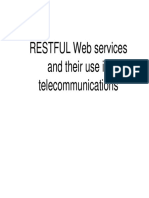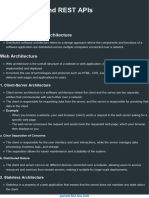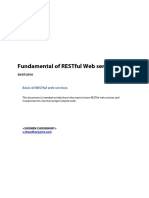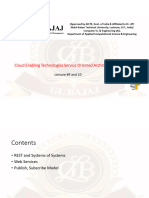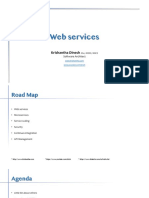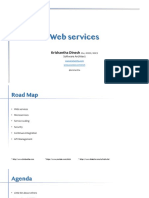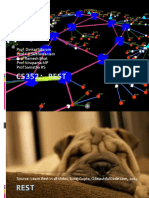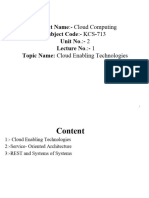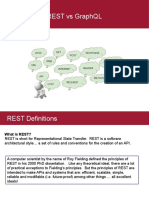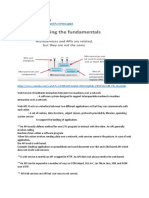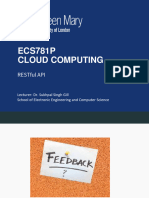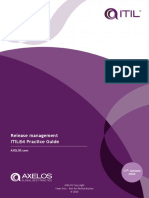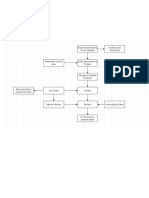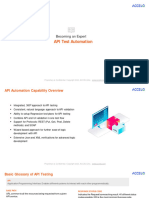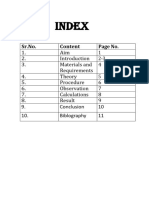0% found this document useful (0 votes)
136 views20 pagesSOA - Introduction: Srikanth Gunturu
A Service Oriented Architecture (SOA) is a distributed systems architecture characterized by logical view, message orientation, description orientation, granularity, network orientation, and platform neutrality. Multiple methodologies like RPC, RESTful and messaging protocols are used to implement SOA. RESTful web services use HTTP methods like GET, POST, PUT, DELETE to manipulate resources represented in XML, JSON or other formats. They are more lightweight and scalable than arbitrary SOAP web services.
Uploaded by
srikanthgsCopyright
© © All Rights Reserved
We take content rights seriously. If you suspect this is your content, claim it here.
Available Formats
Download as PPTX, PDF, TXT or read online on Scribd
0% found this document useful (0 votes)
136 views20 pagesSOA - Introduction: Srikanth Gunturu
A Service Oriented Architecture (SOA) is a distributed systems architecture characterized by logical view, message orientation, description orientation, granularity, network orientation, and platform neutrality. Multiple methodologies like RPC, RESTful and messaging protocols are used to implement SOA. RESTful web services use HTTP methods like GET, POST, PUT, DELETE to manipulate resources represented in XML, JSON or other formats. They are more lightweight and scalable than arbitrary SOAP web services.
Uploaded by
srikanthgsCopyright
© © All Rights Reserved
We take content rights seriously. If you suspect this is your content, claim it here.
Available Formats
Download as PPTX, PDF, TXT or read online on Scribd
/ 20




